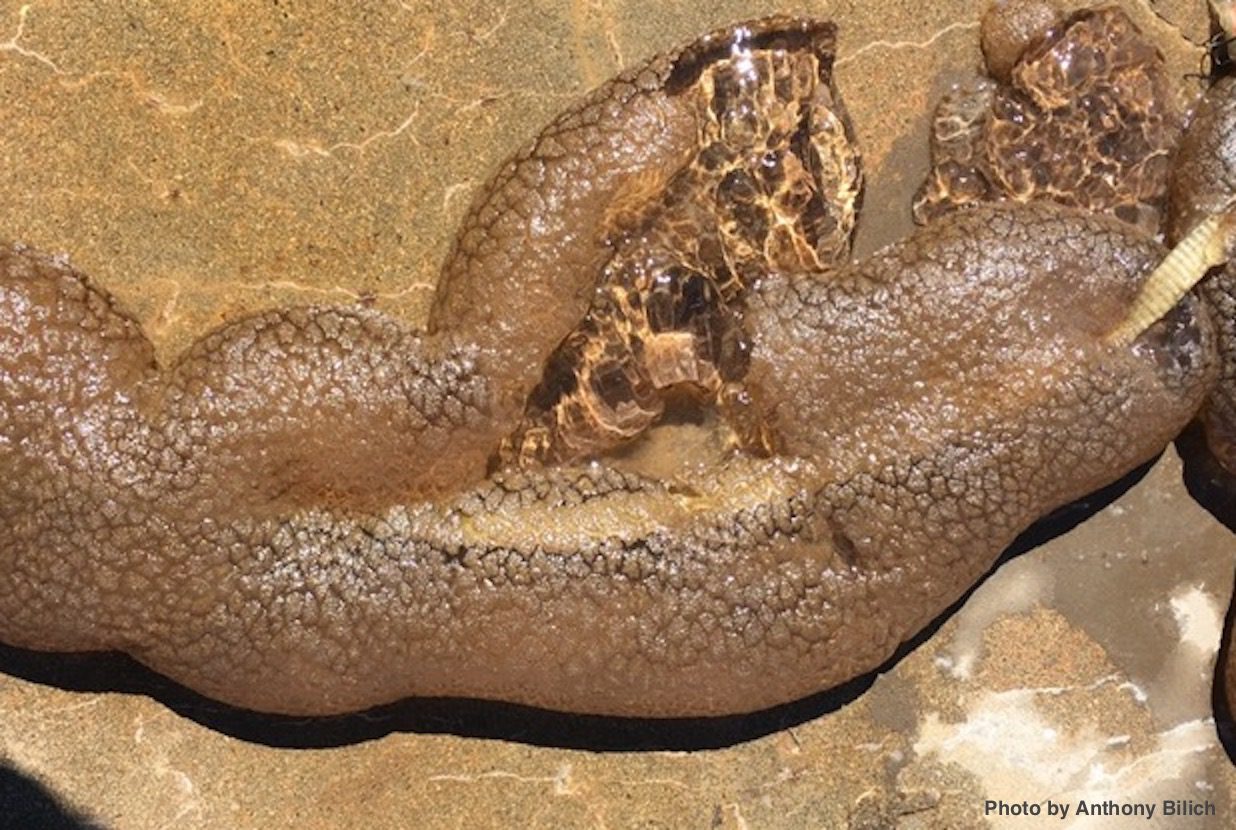Wednesday September 6, 2017

What is this gelatinous, slippery blob that a homeowner recently pulled out of Lake Tulloch, California? Spend enough time in nature and you are likely to encounter some interesting creatures, but this one had us scratching our heads. It turned out to be a bryozoan (Pectinatella magnifica), and the scientific name of this species literally means “magnificent jelly moss-animal.” Magnificent may be debatable, but these animals are certainly intriguing. Bryozoans are aquatic invertebrates like jellyfish, but unlike jellies, which are singular organisms, this blob is made up of thousands of individual microscopic animals, called zooids, living in a colony. A single colony can grow to be 12-20 inches in diameter, but many colonies sometimes grow near or attached to each other, creating a large mass (Balounová et al. 2011). Freshwater bryozoans are usually found in warmer waters from June to September, and can either be free-floating or attached to submerged branches and other objects, like the rope on this homeowner’s dock.
 Freshwater bryozoans are native to the eastern United States, but have recently made the journey west. They were first documented in Oregon in 1998, and were reported in California’s Sacramento-San Joaquin Delta in 2005 (Fofonoff et al. 2017). They reproduce through sporophytes, which are tiny particles that are resilient to drying, and can disperse between watersheds on wind, water, animals, equipment, or people. Not much is known about how this organism will alter watersheds where it is introduced, but scientists are concerned that its spread could disrupt water quality and infrastructure, and transmit diseases to native species. Several species of bryozoans are known to host a microscopic parasite called a myxozoan that causes kidney disease in salmonids (Anderson et al. 2009). The U.S. Geological Survey has a website that can help you identify and document strange aquatic plants and animals that you happen to encounter. Reporting your sightings might help scientists to figure out more about the spread of these unusual creatures.
Freshwater bryozoans are native to the eastern United States, but have recently made the journey west. They were first documented in Oregon in 1998, and were reported in California’s Sacramento-San Joaquin Delta in 2005 (Fofonoff et al. 2017). They reproduce through sporophytes, which are tiny particles that are resilient to drying, and can disperse between watersheds on wind, water, animals, equipment, or people. Not much is known about how this organism will alter watersheds where it is introduced, but scientists are concerned that its spread could disrupt water quality and infrastructure, and transmit diseases to native species. Several species of bryozoans are known to host a microscopic parasite called a myxozoan that causes kidney disease in salmonids (Anderson et al. 2009). The U.S. Geological Survey has a website that can help you identify and document strange aquatic plants and animals that you happen to encounter. Reporting your sightings might help scientists to figure out more about the spread of these unusual creatures.
